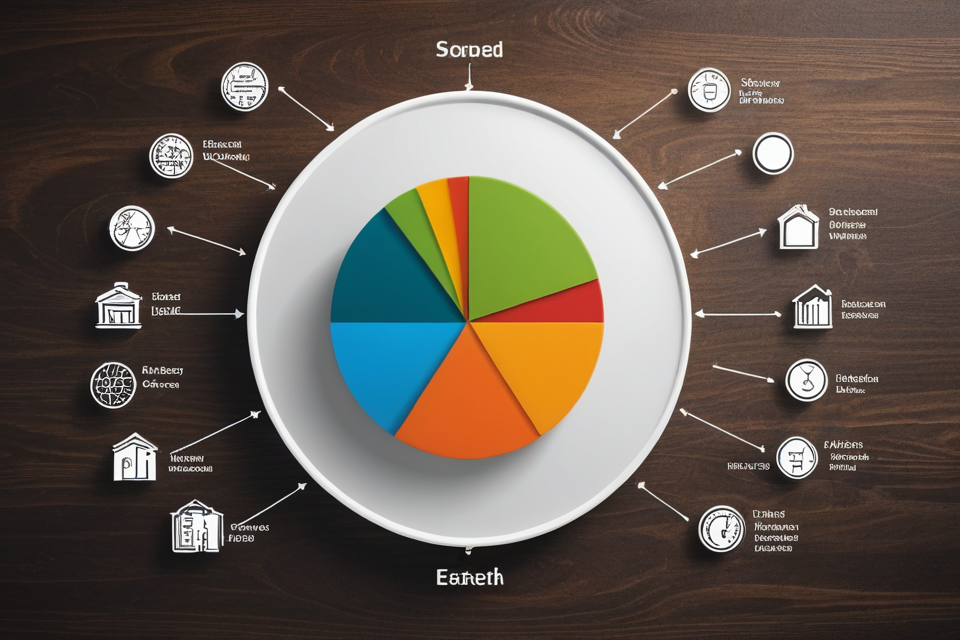In the world of investing, diversification is a fundamental strategy designed to manage risk and enhance the potential for returns. A well-diversified investment portfolio spreads your investments across various asset classes, sectors, and geographies, reducing the impact of poor performance in any single investment. This blog will guide you through the essentials of building a diversified investment portfolio, offering valuable insights for both novice and experienced investors.
1. Understand the Basics of Diversification
Diversification involves spreading your investments across different types of assets to minimize risk. The primary goal is to reduce the impact of any single investment’s poor performance on your overall portfolio.
- Asset Classes: Diversify across various asset classes such as stocks, bonds, real estate, and cash. Each asset class reacts differently to market conditions, which can balance out potential losses.
- Geographical Diversification: Invest in different regions or countries to hedge against economic downturns or political instability in any single location.
SEO Tip: Use keywords like “investment diversification” and “benefits of diversified portfolio” to attract readers interested in managing investment risk.
2. Determine Your Investment Goals and Risk Tolerance
Before building a diversified portfolio, it’s essential to understand your investment goals and risk tolerance.
- Investment Goals: Define what you want to achieve with your investments. Are you saving for retirement, a major purchase, or simply growing your wealth?
- Risk Tolerance: Assess how much risk you are willing to take. Your risk tolerance will influence the types of assets and the proportion of each asset class in your portfolio.
SEO Tip: Include terms like “investment goals” and “assessing risk tolerance” to engage readers looking to align their portfolio with their financial objectives.
3. Choose a Mix of Asset Classes
A diversified portfolio typically includes a mix of different asset classes. Here’s a breakdown of common asset classes to consider:
- Stocks: Equities represent ownership in a company and offer growth potential. Diversify within stocks by investing in different sectors and industries.
- Bonds: Fixed-income securities provide regular interest payments and are generally less volatile than stocks. Consider government bonds, corporate bonds, and municipal bonds.
- Real Estate: Real estate investments can provide rental income and potential appreciation. Options include direct property investments or real estate investment trusts (REITs).
- Cash and Cash Equivalents: Maintain some liquidity with cash or cash equivalents like money market funds or short-term certificates of deposit (CDs).
SEO Tip: Use keywords such as “asset classes for diversification” and “mixing asset classes in portfolio” to attract readers interested in portfolio composition.
4. Consider Sector and Industry Diversification
Within each asset class, diversify across different sectors and industries to avoid overexposure to any single area.
- Sector Diversification: Invest in various sectors such as technology, healthcare, finance, and consumer goods. This reduces the impact of downturns in any one sector.
- Industry Diversification: Within sectors, diversify across different industries to further mitigate risk. For example, within the technology sector, consider investments in software, hardware, and telecommunications.
SEO Tip: Keywords like “sector diversification” and “industry diversification strategies” will engage readers interested in avoiding concentration risk.
5. Incorporate Different Investment Vehicles
Utilize various investment vehicles to achieve diversification within and across asset classes.
- Mutual Funds: These funds pool money from multiple investors to invest in a diversified portfolio of stocks, bonds, or other assets.
- Exchange-Traded Funds (ETFs): ETFs are similar to mutual funds but trade on stock exchanges like individual stocks. They offer diversification and typically have lower fees.
- Index Funds: These funds track a specific market index, such as the S&P 500, and provide broad market exposure at a low cost.
SEO Tip: Include terms like “mutual funds vs ETFs” and “index funds for diversification” to attract readers looking for diverse investment options.
6. Regularly Rebalance Your Portfolio
Rebalancing involves adjusting your portfolio to maintain your desired asset allocation.
- Review Performance: Periodically review your portfolio’s performance and the performance of individual investments.
- Adjust Allocations: Rebalance by buying or selling assets to return to your target allocation. This helps ensure that your portfolio remains aligned with your risk tolerance and investment goals.
SEO Tip: Use phrases like “portfolio rebalancing” and “how to rebalance investment portfolio” to attract readers interested in maintaining optimal asset allocation.
7. Stay Informed and Educated
The financial markets are dynamic, and staying informed can help you make better investment decisions.
- Market Trends: Keep up with market trends, economic indicators, and investment news to make informed choices.
- Ongoing Education: Invest time in learning about different asset classes, investment strategies, and financial planning principles.

